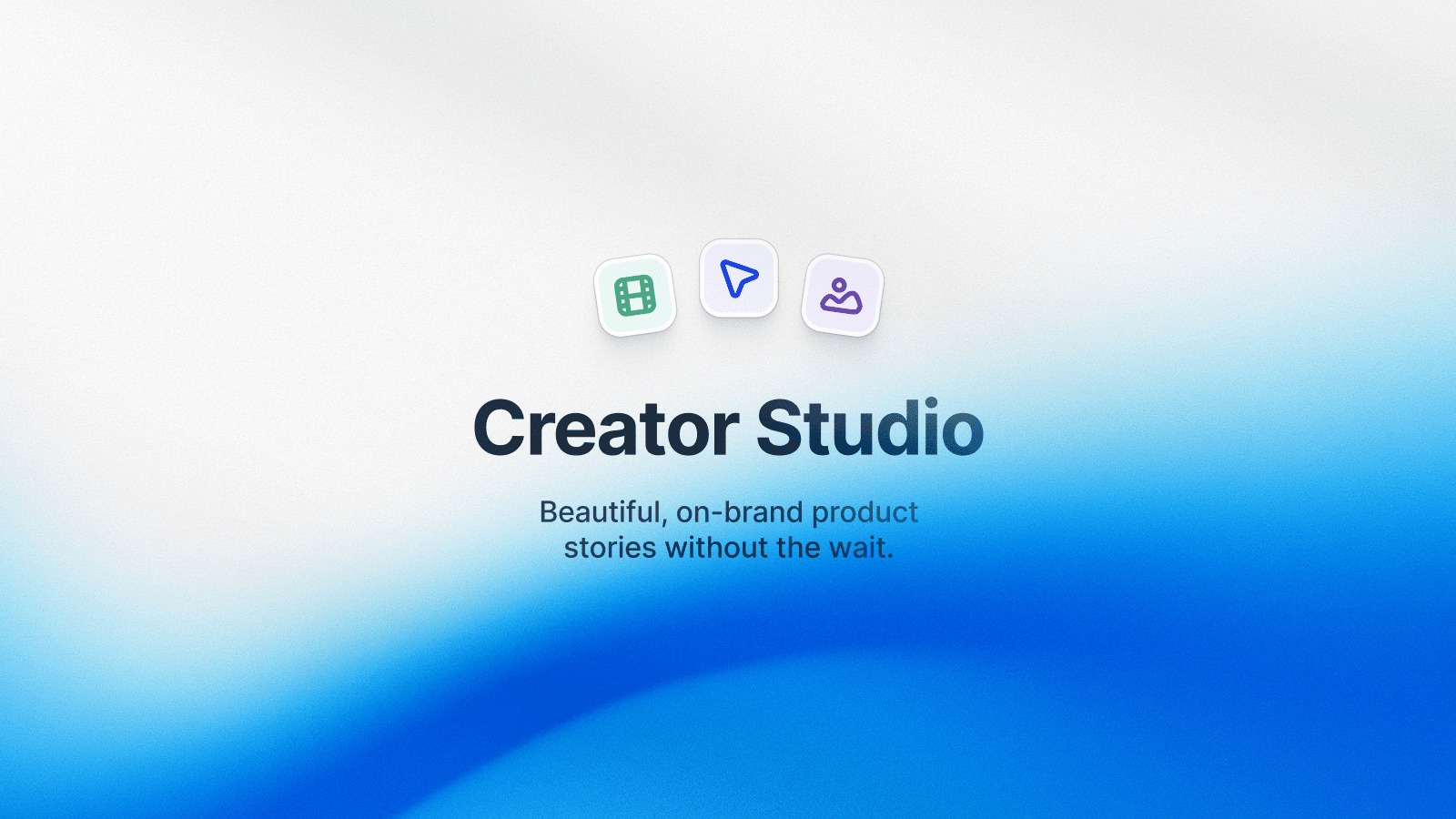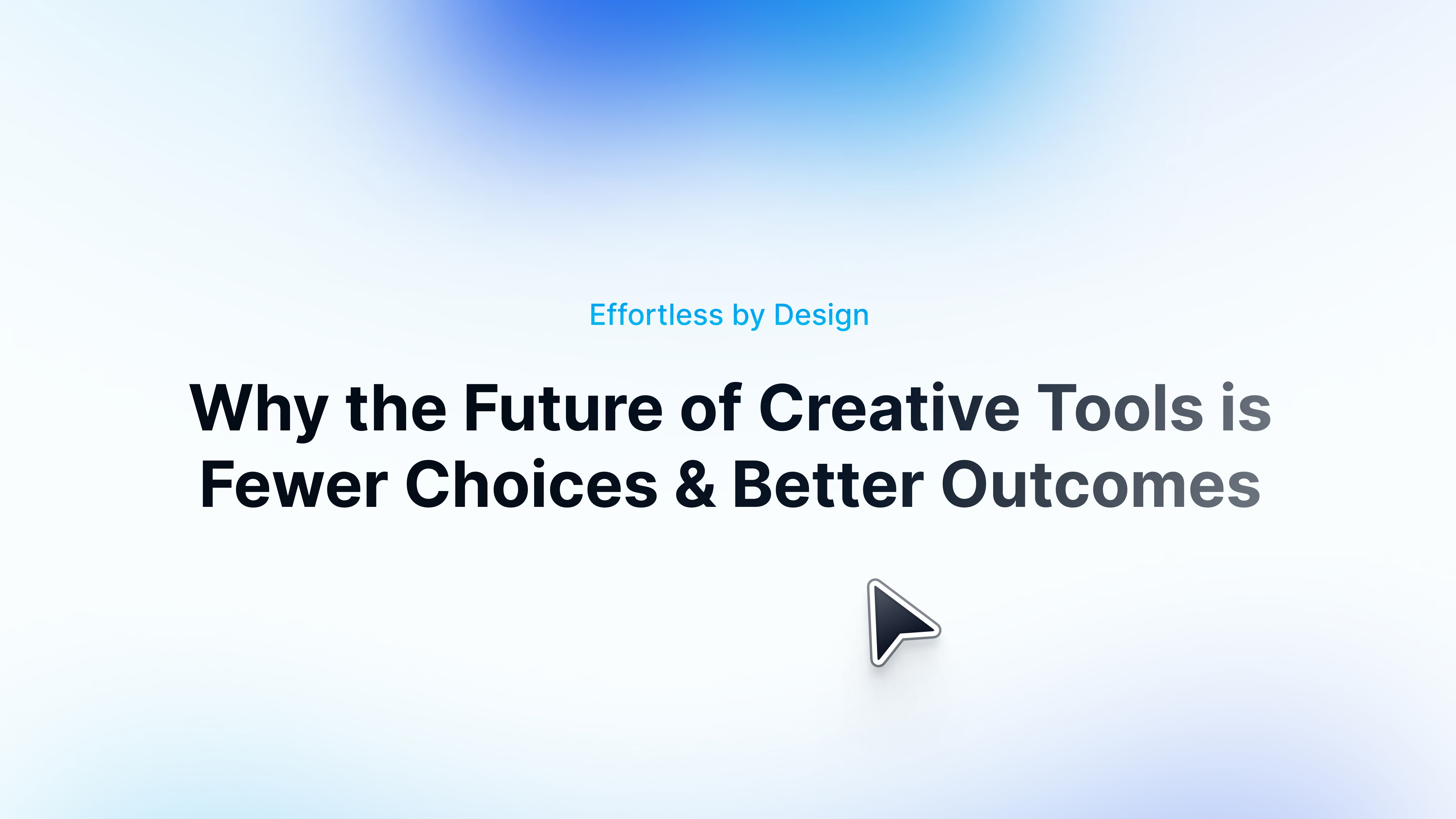In this article, we will discuss how interactive demos have become an incredibly versatile tool for companies to showcase their products to prospects and customers, win more deals, and drive product adoption – all while creating a more engaging experience.
From there, we will walk through step-by-step instructions on creating effective interactive demos that convert — whether your goal is to increase demo bookings from your website, help new users activate faster, or drive upgrades by showing off new paid features. Let's dive in!
Table of Contents
- What are interactive demos?
- Why should you use interactive demos?
- What are teams using interactive demos for?
- Step-by-step instructions on how to create a demo that converts
- Examples of effective interactive demos
What are interactive demos?
Interactive demos are immersive experiences that allow viewers to actively engage with a demonstration of a product, service, or concept. Compared to passive mediums, like videos and images, interactive demos encourage the viewer to actively engage with the content, leading to higher comprehension and engagement. For example, Arcade demos drive 7.2x higher conversion than videos.
For example, sales teams create leave-behinds during deal cycles, marketing teams generate content for product launches, and product teams share prototypes throughout all stages of development to gather feedback and iterate quickly.
When done effectively, interactive product demos can help you achieve more business objectives, from generating more pipelines and winning more deals to increasing product adoption and activation metrics. As a storytelling tool, interactive product demos are compelling for both the company (or the storyteller) and the viewer.
Companies choose interactive demos to bring the product to life and better explain how they solve their customers’ problems. With high levels of customization, they can create high-quality, on-brand assets every time without requiring technical or design resources. Additionally, by observing how viewers engage and interact with the demos, teams get more insight into their interests and preferences, which enables them to learn and optimize their content.
As a viewer, you have total control over how you progress through the story: learn at your own pace, dig deeper into specific product features, and fully immerse yourself in the experience.
Why use interactive demos?
Telling the story of your product is hard regardless of whether you have a complex product or your company is simply shipping new things quickly (exciting!), and it's hard to keep up. At the same time, buyers' preferences for how they want to research and buy software are changing.
According to a recent B2B buyer report by TrustRadius, 100% (yes, you read that right) of buyers indicated that they want at least a part of their buying process to be self-serve. They dread booking a time on an SDR or AE's calendar, having to wait for the demo call, and then sit through a sales demo to learn what the product looks like.
They want to experience the product themselves at their own pace.
What are teams using interactive demos for?
- For marketing teams, the alternatives to an interactive demo are GIFs, screenshots, videos, or just plain writing. GIFs are a pain to create, often in low resolution, and not great for distribution. Great videos take a lot of effort to produce, and if you want a high-quality one, it will cost you $$$. Interactive demos allow marketing to tell their story in minutes (the average time to publish with Arcade is 6 minutes!), and they still have the option to create GIFs and videos from their demo in just a few clicks if they need that version for distribution.
- For sales teams, your product is your competitive edge. In the age of self-serve and product-led growth, sales teams miss out on prospects because the buyers don’t want to wait to jump into a demo conversation. Interactive demos effectively capture more prospective buyers and increase their intent before moving into a formal sales cycle. Also, they are great for spreading knowledge and use cases internally within a company when prospecting. Interactive demos are engaging and allow your product to be in the room for the conversations you’re not in.
- Product teams play a crucial role at every stage of development, and you constantly have to show the product — whether through prototypes (painful to build) or new product launches. You also need to gather customer feedback throughout the full cycle, which can be hard — especially at scale. Interactive product demos allow product teams to learn, iterate, and drive product adoption much faster, saving them time.
Let's take a closer look at how this process works!
Step-by-step instructions:
How to create an interactive demo that converts
Here are some tips and insights to keep in mind as you create interactive product demos (we looked across 10,000+ teams using Arcade to tell better, more engaging product stories):
Step 1: Understand the goals of your interactive demo and your ICPs
Before you start, taking a step back and thinking through what you want to achieve is a good idea. Specifically, what actions do you hope the viewers take after the interactive demo? Some of the common goals when creating a demo include:
- Generating inbound leads (through forms incorporated in the demos)
- Converting more signups
- Upgrading customers to paid plans
- Increasing new user activation
... and more!
While other assets and collateral could help you achieve these goals, interactive demos stand out because they are (a) easy to create, (b) great for distribution, and (b) live assets designed to be updated.
Ease of creation:
Creating demos for companies using sandboxes is resource-intensive, difficult to maintain, and often buggy. If you're moving quickly, this level of dependency is tricky. Similarly, for companies looking to create high-quality demo videos, it requires a lot of effort (time and money) and creative expertise to produce. This means that many companies can only create a few per year, if that.
Interactive demos are designed for ease of use and speed (the avg. Arcade takes 6 minutes to publish!).
Distribution:
Having great content is not impactful if you don't have distribution. This is especially important for teams that are moving fast and want to work efficiently.
Some demo platforms (like Arcade) allow you to export in video and GIF formats, which allow you to easily scale distribution and save time (for example, LinkedIn and email campaigns).
Live assets:
Interactive demos are meant to be updated again and again as needed. Adding new features to your product might make your product tour obsolete. If your product tour were a video, you would need to re-record the video, make the necessary edits, and then re-upload it to the channels the video was originally distributed.
With interactive demo software, you can make any edits, and it automatically updates any property.
Step 2: Outline the interactive demo software according to your use case
Putting yourself in the prospect or customer's shoes and thinking about what they would need to know can help you maintain a coherent storytelling experience before you even start creating.
‘Walking’ through the product experience yourself can help you decide which parts of the product to show or not. Depending on the use case, the outlining and planning process could take a few minutes or much longer.
Other things to think about:
- The easiest way to lose your audience’s interest is to ramble on without attention-grabbing hooks or “aha” moments.
- If the product or feature you are trying to show off is complex, consider breaking it down into smaller interactive demos instead of one long-winded one.
- Keep your annotations concise and to the point.
Step 3: Choose an interactive demo software
There are a variety of interactive demo softwares available to choose from.
Teams choose Arcade over other players because it's designed for ease of use (less than 6 minutes on average to publish), visual polish, and speed of innovation. Check out our public changelog to see what we mean 😊. Arcade is also the first (and only!) interactive demo platform to have a desktop app, which allows you to record desktop and terminal apps.
Anyone can create a free account with Arcade and get started today! Make sure to install the free Chrome browser extension or desktop app.
Step 4: Record, edit & personalize your first interactive product demo
It's time to create your demo! With Arcade, there’s a variety of editing tools pre- and post- capture for you to use.
Pre-recording: Edit HTML on web pages you want to capture
Post-recording: Add voiceover, record a personalized video, incorporate background music, or even include form submission at any point during the interactive product tour.
Instead of making you read an unnecessary wall of instructions, we created this four-part interactive walkthrough with Arcade to show you exactly how to do it.
.png)
Best practices for creating best-in-class demos
#1 Focus on clarity and instruction
Demos should be designed to clearly explain how users can achieve specific outcomes or solve problems using the product or service.
This involves:
- Step-by-Step Guidance: Break down processes into manageable steps, ensuring users can follow along easily.
- Clear Objectives: Start with a clear statement of what the user will learn or accomplish by the end of the demo.
🕹 Arcade features to try: Intro chapters, hotspots, and callouts
#2 Personalize the experience
Tailoring the demo to meet the specific needs or interests of the target audience can increase engagement and relevance.
Strategies include:
- Segmentation: Create different versions of the demo for different audience segments.
- Interactive Elements: Allow viewers to choose their own path and self-tailor the demo.
🕹 Arcade features to try: custom variables and advanced branching
#3 Highlight the value proposition
Demonstrating how your product solves a customer's problem is crucial.
This can be achieved by:
- Better storytelling: Don’t think of your Arcade as a “how-to.” Every step is part of the story.
- Benefits Over Features: Focus on how the features translate into tangible benefits for the user.
🕹 Arcade features to try: synthetic voice and chapters
#4 Keep it engaging and accessible
Attention spans are short. You have a chance to move from passive to interactive viewing. Take advantage of that.
Strategies include:
- Visuals and Interactivity: Incorporate visuals and interactive elements to maintain user interest and facilitate understanding.
- Short and Focused: Aim for brevity to hold the audience's attention, focusing on the most critical aspects of the offering.
🕹 Arcade features to try: pan and zoom and backgrounds
#5 Drive action
Every demo should have a goal. Maximize your viewers' attention by providing clear instructions on the best next steps.
This involves:
- Multiple touchpoints: Don't wait until the end to provide options. Include call-to-action buttons within the demo.
- Track performance: Make sure to include tracking on your CTAs with UTMs (or through Integrations)
🕹 Arcade features to try: custom branding (watermark and share button CTA), forms, and themes
#6 Learn and optimize
The beauty of an Arcade is that you can keep iterating and making changes to it. It is an evergreen asset designed to be updated.
This involves:
- Track performance: With Insights, see how your Arcade performs across time, understand which path(s) your audience took, and see how your Arcade stacks up against these benchmarks.
- Connect to your existing tools: Whether you are looking to connect Arcade forms to your Hubspot CRM or want more robust insights on product behavior in Amplitude, Integrations allow you to go a layer deeper.
🕹 Arcade features to try: insights and integrations
Step 5: Monitor how your audiences are interacting with the demo
So, your interactive product demo or product tour is now live! Great job. You will want to continue tracking and monitoring the performance of your demo after it goes live. This will help you make adjustments to the demo as needed.
💡Remember: interactive demos, or Arcades, are live assets that are meant to be optimized and evolve with your product.
Arcade Insights provides detailed analytics of engagement data on both the viewer and company levels. In addition to top-line metrics like play rate and click-through rate, Insights also shows branching performance, form submissions (if you added forms), and audience reveal, which shows which companies have been engaging with your Arcade. The last one can be a great source of signals to leverage in your outbound or ABM strategy.
Examples of effective interactive demos
Quantum Metric
Use Case: Marketing/Sales
Industry: Product analytics
Our friends at Quantum Metric saw their demo conversion double with Arcade! We talked to Trevor Pyle, Senior Director of Product Marketing and Strategy, to learn more about how they increased demo conversion by 2x with Arcade through an interactive demo library strategy.
Glide
Use Case: Education/Customer Success
Industry: No-code software
Glide went all in with interactive product tours to revamp their documentation library and saved six months of content production time with Arcade! We spoke with Cait Levin, Glide's Education Lead, to learn more about how Arcade helped her reimagine their documentation library and why she believes interactive learning through product tours is a new way to educate customers.
Check out this Arcade that Glide is using as a training course on adding a bar chart (they made great use of the voiceover feature).
Chameleon
Use Case: Product
Industry: Product adoption platform
Chameleon incorporated Arcades into their onboarding experience to educate new users and increase activation. We spoke with Pulkit Agrawal, CEO & Co-founder at Chameleon, about how his team saw a 30% increase in trial likelihood with Arcade.
If you have any questions about how Arcade could work for your team, drop us a line at sales@arcade.software or book time a time with us.
We can't wait to see what you create.
Build on 🤘,
The Arcade Team








